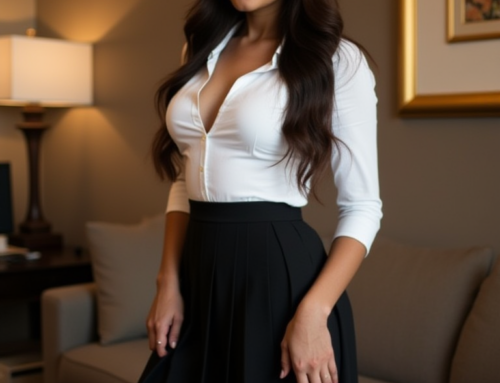The Seduction and Allure of Oktoberfest: The Evolution of Traditional Women’s Dress and Its Role in Flirtation and Teasing
Oktoberfest, the world-renowned festival originating in Munich, Germany, is not only famous for its beer, food, and cultural traditions but also for the iconic traditional attire worn during the celebration. #Oktoberfest #Oktoberfest2024 #Prost #BavarianStyle #Dirndl Among the most recognizable aspects of the festival is the Dirndl, a traditional Bavarian dress worn by women, which has evolved over time to become a symbol of flirtation, teasing, and seduction during the festivities.
The Dirndl, with its fitted bodice, cinched waist, and full skirt, draws attention to a woman’s figure, and in the festive atmosphere of Oktoberfest, the dress has come to represent much more than just a cultural tradition. In this article, we’ll explore the history of the Dirndl, how it became a symbol of seduction, and the role it plays in the playful teasing and flirtation that often accompanies the Oktoberfest celebration.
1. The Traditional Dirndl: Origins and Evolution
The Dirndl originated as the working dress for women in rural Alpine regions, including Bavaria and Austria, during the 18th and 19th centuries. It was primarily worn by peasants and servants, designed to be practical yet durable for everyday work. The classic Dirndl included a bodice, a blouse, a skirt, and an apron. The bodice was tight and structured, often laced or buttoned, while the skirt was long and flowing, designed to accommodate movement.
As time passed, the Dirndl was embraced by the upper class as a symbol of regional pride and tradition. It was no longer just for peasants but also adopted by wealthier women who wanted to celebrate their Bavarian heritage. With this shift, the Dirndl became more elaborate and decorative, with finer fabrics such as silk and lace being incorporated into the design.
By the 20th century, the Dirndl had transformed from a practical work outfit to a fashionable and highly feminine dress that accentuated the waist and bust, making it increasingly associated with flirtation and seduction, especially during celebratory events like Oktoberfest.
2. The Modern Dirndl: A Symbol of Seduction and Teasing
In modern times, the Dirndl has become synonymous with Oktoberfest and is celebrated for its ability to flatter the female form, drawing attention to the curves of the waist, bust, and hips. The fitted bodice pushes up the bust, creating a cleavage-enhancing effect, which is often a focal point of the modern Dirndl’s appeal. While the traditional Dirndl had a longer skirt that reached the ankles, modern versions are often shorter, reaching just above or below the knee, adding to the playful and flirtatious nature of the dress.
At Oktoberfest, women wearing Dirndls are often seen engaging in playful teasing and flirtation, both with their fellow festival-goers and as part of the overall atmosphere of celebration. The revealing nature of the Dirndl, combined with the festive and often inebriated mood of the event, makes it a key part of the flirtatious environment.
The apron tied over the Dirndl also carries a special meaning during Oktoberfest. The position of the bow on the apron is an important cultural signifier:
- Bow on the right side: Indicates that the woman is taken, whether in a relationship or married.
- Bow on the left side: Signals that the woman is single and possibly open to flirtation.
- Bow in the center: Traditionally signifies virginity or that the wearer is “saving herself.”
- Bow at the back: Often worn by widows or waitresses.
This small detail, known by most Oktoberfest attendees, adds a layer of playful communication and teasing to the event. For single women, the placement of the bow on the left side is a subtle invitation to potential suitors, while for those who are taken, the bow on the right acts as a cheeky signal to back off.
3. Oktoberfest Fashion and Seduction: Playing with Tradition
At Oktoberfest, both men and women embrace traditional Bavarian fashion, but it is often the women’s Dirndl that captures the most attention for its seductive qualities. The fitted nature of the bodice, along with the cleavage it enhances, becomes a focal point of attraction, especially in a festival environment where social interactions are lighthearted and fueled by beer.
Oktoberfest’s jovial and carefree atmosphere encourages playful banter and flirtation, and the Dirndl serves as a visual cue for these interactions. Women often use their outfits as a means to engage in playful teasing, catching the eye of fellow festival-goers while maintaining the balance of tradition and modernity. The Dirndl’s historical roots as a work dress lend it an air of modesty, but its modern adaptations—particularly in the shorter skirts and tight bodices—turn it into a seductive outfit that plays on the contrast between modesty and sensuality.
For example, a modern Dirndl may feature intricate lace detailing around the neckline or be made of luxurious fabrics that sparkle under the festival lights. The short skirt adds an element of fun, as the wearer moves through the crowded beer tents, swirling around in a sea of vibrant colors, music, and laughter. In this way, the Dirndl becomes part of the Oktoberfest experience, blending culture, fashion, and flirtation into one iconic celebration.
4. The Role of Teasing in Relationships and Social Interactions
At Oktoberfest, the playful teasing and flirtation that the Dirndl inspires often serve as a social icebreaker. The dress is not only a symbol of tradition but also a tool for sparking conversations, flirtation, and even romantic connections. The festival’s casual and celebratory atmosphere provides an ideal setting for such interactions, as people are more likely to let loose and enjoy the fun.
For couples, the Dirndl can also play a role in deepening intimacy. A woman wearing a Dirndl might enjoy the way her partner admires her in the dress, and the playful tugging at the apron strings or adjusting the bodice can become part of a flirtatious dynamic between them. The suggestive nature of the dress, combined with the carefree spirit of Oktoberfest, can reignite passion and playfulness in relationships.
5. Conclusion: The Enduring Appeal of the Dirndl
The Dirndl’s transformation from a humble work dress to a symbol of seduction and flirtation at Oktoberfest is a testament to its enduring appeal. Its combination of tradition and modern sensuality makes it a key part of the festival experience, allowing women to embrace their heritage while engaging in the fun and flirtation that define the event. Whether it’s the placement of the apron bow, the fitted bodice, or the swirling skirt, the Dirndl continues to be a beloved and playful symbol of seduction, teasing, and celebration at Oktoberfest.
#Oktoberfest #Oktoberfest2024 #Prost #BavarianStyle #Dirndl #Lederhosen #BeerFest #MunichVibes #CheersToBeer #BavarianBeer #BeerLovers #GermanBeer #Biergarten #Wiesn #FlirtFest #FestiveFun #BeerAndCheers #ProstFriends #OktoberfestFashion #CelebrateWithBeer #OktoberfestOutfits #BavarianTradition #OktoberfestVibes #OktoberfestFlirt #OktoberfestParty







Leave A Comment